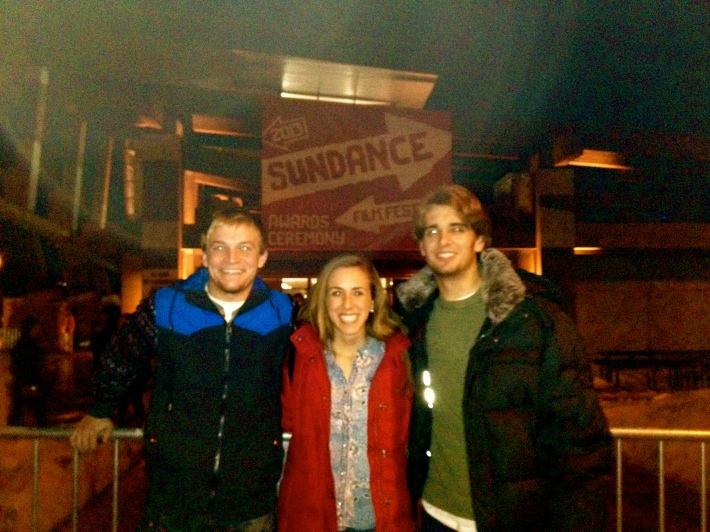Lovelace
Directors: Rob Epstein and Jeffrey Friedman
Screenwriter: Andy Bellin
In the film Lovelace, Amanda Seyfried plays the part of Linda Marchiano, better known by her stage name, Linda Lovelace. Alongside Peter Sarsgaard, who plays her abusive husband, the story revolves around her rise to fame via the pornographic film, Deep Throat, released in 1972. The film seeks to explain exactly who Linda Lovelace was and how she became a porn star, focusing on the abuse Linda experienced at the hands of her husband Chuck Traynor, who forced Linda into using her sexual appeal to make money. In the end, Linda is able to break free from Traynor with the help of other porn producers, later starting a family and seeking to return to normal life by writing a book about her life, with hopes to help other girls who feel trapped in similar situations because they were taught to be obedient to their husbands.
Lovelace does a great job of portraying Linda Lovelace in a way that is accessible to all audiences. Pornography is a taboo subject in American culture and the filmmakers were able to create Linda into a relatable person by looking past the explicitly shocking sexual material to get to the heart of Linda—a kind-hearted individual who only ever wanted to be loved and please those whom she loved. The film flowed in a way that was easy to follow as well, mirroring how the filmmakers learned of Linda’s story. Visually, the film made the audience feel like they too were peering into the seventies, as if it were as tangible as modern today. Perhaps if the movie were made in part or in whole with lenses that would allow the film to look more like film from the 1970s, the film might have transported the audience even more to that time, with a more old school feel.
In terms of myth, the film shows Linda growing up in a Christian household with conservative values, concern for outward image, stemming from her mother, and hard work stemming from her father’s work. Linda goes against the rules that her meta-myth has created when she stays too late at her boyfriend Chuck Traynor’s house one night, and suddenly she is kicked out and able to live her myth free of any of the old constraints of her family’s rules. It seems she is able to make her own happy myth for a time with her husband Chuck Traynor until they begin to lose their money to Traynor’s failed business ventures, of which Linda knows very little, until she becomes the sales pitch. Suddenly, Linda is asked to put the ethics aside that she learned from her parents, by taking on a role in a porn film, at the request of her husband. She believes her husband’s myth, enduring abuse, and even after she asks her own mother for help out of her situation, the meta-myth that raised her, will not keep her safe from Traynor because of the value her mother places in obedience to one’s husband. Thus, Linda must “act” in the porno, Deep Throat, against her own myth, which she is only able to confront and explain to others through an autobiography she writes after leaving her husband, with the help of her admiring porn film producers.
One mainstream American cultural belief that is challenged in the film is the traditional patriarchal belief that women should be obedient and accommodating to their husbands’ demands. In the movie, Linda runs to her mother and father’s home when her husband first beats her, hoping to find help out of her marriage that has taken a turn for the worse. Her mother disregards what Linda says, turning the blame on Linda when she says, “What did you do to make him hit you?” Essentially it was acceptable within their meta-myth for a husband to hit his wife if she did not respect him, and so Linda’s mother told her to go home and do what her husband wanted, in order to be a good wife. Once Linda is able to get away from her husband for good, she challenges the belief that the women in the porn industry always choose to participate in it, and she also challenges domestic violence by sharing her story, being a strong voice for women. In real life, Linda Marchiano really did challenge these perceptions of women in marriage and in pornography with her book, becoming a voice in the feminism movement.
In terms of the content of this film, the subject of pornography and the way in which the filmmakers portray Linda as an individual, rather than a mere pawn in the world of porn, speaks to the film’s independent aspects. Porn is a subject that is not widely accepted in the U.S., despite the fact that it is commonly used with the wide reach of the Internet, so making a movie about a famous porn movie of the 1970s is already a film subject that might understandably be a turn-off for big movie studios, besides the fact that there is quite a bit of nudity. The fact that the filmmakers did not merely leave the film about Linda’s time in pornography, also choosing to include the impact that Linda wanted to make upon women young and old with the message of her autobiography and her work advocating women’s rights.
During the question and answer period, Amanda Seyfried said it was a challenging part for her to play. The filmmakers said that in telling Linda’s story, they wanted to also convey the things she symbolizes in American pop culture history: a moment of sexual revolution and a spur to feminism, just as porn was becoming an exploding success, essentially defining a huge part of American culture today. The directors wanted to portray the fame struggle Linda had before she could gain back a sense of self, having no agenda in telling the story except to start a conversation in acknowledging Linda’s activism. Interestingly enough, the two directors were also gay and they publicly related the struggle of living their own myths with the myth that Linda struggled to live.


